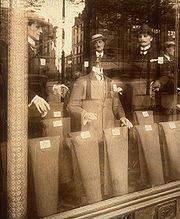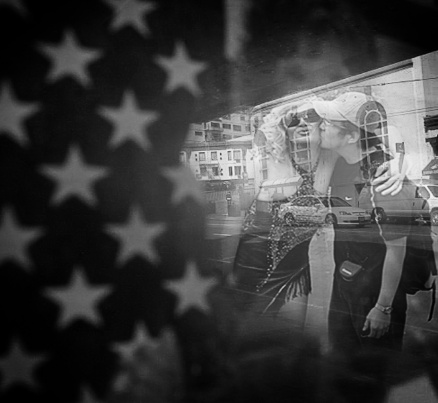Some art historians believe that photography cannot be viewed as visual art. They try to prove their point by the fact that any kind of art changes, transforms life, or even distorts it; these people argue that photography is a mere copy of reality. It seems that this conclusion is very far-fetched. In my opinion, Eugene Atget proves that photography cannot be treated just as reproduction.
I chose to emulate the works of this photographer because his photographs beautifully combine a realistic and aesthetic description of life. The fluidity of his forms eloquently represents the most peculiar features of modernism. Although Eugene Atget did not view himself as an artist, a great number of his works prove that photography also can change nature.
In his photographs, the author beautifully shows the interplay of light and shadow. His works show this unforgettable interplay between the imaginary and real-world, reality and reflection. It is worth mentioning that people in his pictures are often depicted as just reflections in the mirror. To my mind, it is one of the fascinating features of his style. To my mind, the message that he wants to convey is that we understand ourselves only through interactions with other people. Atgets photograph “Avenue des Gobelins” is a bright example of the masters style.

This photography belongs to the series of city landscapes made by Atget at the be the beginning of the twentieth century. It is worth mentioning that Paris has always been of great interest to the author. Certainly, this city is often considered a source of inspiration for many artists.
My intention was to emulate these city landscapes. I wanted to show that big city life is often some labyrinth of reflection, and it is often very difficult to distinguish between the imaginary world and reality. I attempted to adhere to the authors style, and therefore people have been depicted as reflections in the mirrors. It was very difficult for me to simulate Atgets ability to show the interplay between light and shadow.
Moreover, one should always bear in mind that the equipment Atget used at the beginning of the twentieth century is drastically different from what we have now. The photographer had to operate without a wide-angle lens. It is believed that the focal length of Atgets lens was ranging from eight to eleven inches. I attempted to find such equipment, despite the fact that it is very rare. As it turned out, it was very difficult to shoot with such kind of apparatus.
Additionally, I found it very difficult to emulate his style, especially photographing people. As I have already, the author often perceives other people just as reflections in the mirror. These reflections are often so elusive. They seem to merge into a single entity with the landscape, as we can see in “Avenue des Gobelins” This fluidity of lines is very difficult to capture. Certainly, I have attempted to pay tribute to his works. But it doe not seem to me that I have managed to successfully emulate all the peculiarities of the authors style. To some extent, I have managed to show that life in a big city can be viewed as some maze of reflections. For example, we make take such picture of mine:
/var/www/blog-sandbox.itp/wp-content/uploads/2021/09/192126_2.jpg 438×403 24bit N JFIF [OK] 48697 –> 47224 bytes (3.02%), optimized.

However, it cannot be compared with the Paris series of Eugene Atget.
From this project have learned that photography can truly be the most difficult kind of visual art because the photographer has to see show the beauty of life without changing it, and it is very difficult to capture this moment.
Bibliography
Beaumont Newhall. The History of Photography: From 1839 to the Present Day. Museum of Modern Art, 1964.